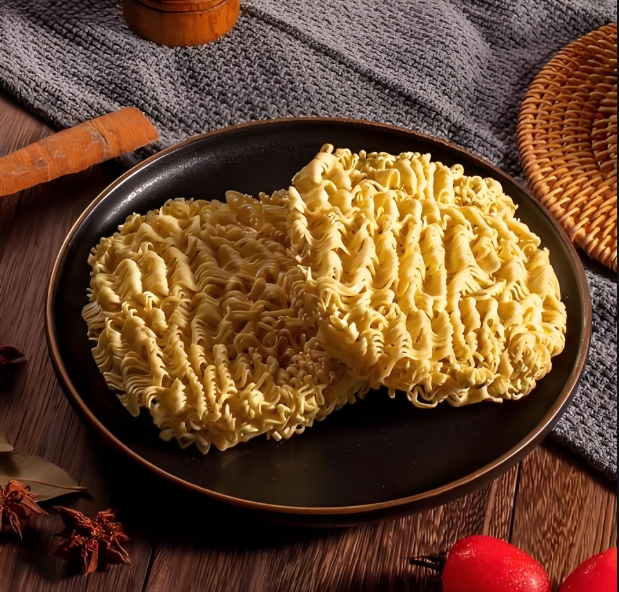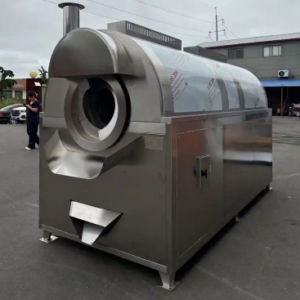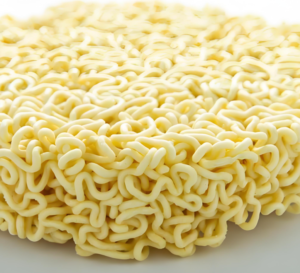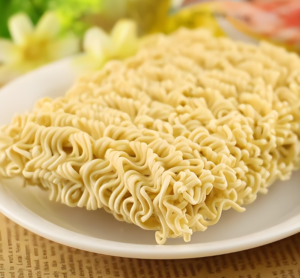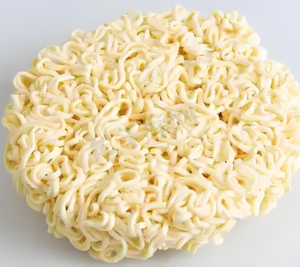<h1>Exploring Production Capacities of Small Instant Noodle Equipment</h1>Introduction to Small Instant Noodle Equipment
Small instant noodle equipment plays a vital role in the food manufacturing industry, especially for startups and small-scale producers. These machines are designed to produce instant noodles efficiently while requiring minimal space and investment. In the global market, instant noodles are a popular convenience food, with demand driven by busy lifestyles and urbanization.
Small Instant Noodle Equipment
ToggleThis article delves into the various production capacities of small instant noodle equipment. We’ll cover key factors, types, and considerations for businesses in foreign trade. Whether you’re an exporter or manufacturer, understanding these capacities can help optimize operations and meet market demands.
What is Small Instant Noodle Equipment?
Small instant noodle equipment refers to compact machinery used for producing instant noodles on a limited scale. These systems typically include mixers, rollers, cutters, steamers, fryers or dryers, and packaging units. Unlike large industrial lines, they are ideal for small businesses aiming for flexibility and lower initial costs.
Production capacity is a core metric, measured in kilograms or packs per hour. It determines how much output a machine can handle, influencing scalability and profitability. For B2B traders, selecting equipment with the right capacity ensures competitive edge in international markets.
Types of Small Instant Noodle Equipment and Their Capacities
There are several types of small instant noodle equipment, each tailored to different production needs. Capacities vary based on the machine’s design, automation level, and processing method. Let’s break this down by common categories.
Frying-Type Instant Noodle Machines
Frying-type machines are popular for their ability to produce crispy, flavorful noodles quickly. They involve mixing dough, shaping, steaming, frying, and cooling. A typical small frying machine has a production capacity of 100 to 500 kilograms per hour.
For instance, entry-level models might output around 100 kg/h, suitable for local markets or testing new flavors. Mid-range options can reach 300 kg/h, allowing businesses to scale up without massive investments. Factors like oil temperature and frying time directly impact efficiency and final product quality.
Air-Drying or Non-Frying Type Machines
Air-drying machines cater to health-conscious consumers by avoiding oil frying. They use hot air circulation for dehydration, resulting in lower-fat noodles. Capacities for these units generally range from 80 to 400 kg/h.
Small-scale air-drying equipment often starts at 80 kg/h, making it accessible for startups. As you move to more advanced models, capacities can hit 400 kg/h, which is ideal for exporting to regions preferring healthier options. This type emphasizes energy efficiency and reduced environmental impact.
Automated vs. Semi-Automated Systems
Automation level significantly affects production capacity. Semi-automated systems, which require manual intervention for tasks like packaging, typically offer 150 to 250 kg/h. Fully automated lines can boost this to 300 to 600 kg/h by streamlining processes.
In B2B scenarios, automated equipment enhances consistency and reduces labor costs, appealing to exporters. For example, a fully automated small line might produce 500 kg/h, enabling faster turnaround for bulk orders in foreign trade.
Factors Influencing Production Capacities
Production capacity isn’t fixed; it’s influenced by several variables. Understanding these helps businesses select the right equipment for their needs.
- Raw Material Quality: High-quality flour and additives can increase efficiency, potentially raising capacity by 10-20%.
- Machine Specifications: Factors like motor power and conveyor speed determine output. A machine with higher RPM might achieve 20% more capacity than a basic model.
- Operational Environment: Temperature, humidity, and maintenance affect performance. In humid conditions, capacities could drop by up to 15% if not managed properly.
- Integration with Other Equipment: Linking with packaging or quality control systems can optimize workflows, effectively increasing overall capacity.
Businesses in foreign trade should conduct trials to assess real-world capacities. For instance, exporting to Asia might require machines handling 200-400 kg/h to meet demand without overproduction.
Benefits of Small Instant Noodle Equipment for B2B Operations
Small instant noodle equipment offers numerous advantages for B2B players in the foreign trade sector. Their compact size allows for easy installation in limited spaces, reducing overhead costs.
From a production standpoint, these machines enable quick adaptability to market trends. If a new flavor gains popularity in Europe, a 200 kg/h machine can switch production lines swiftly, minimizing downtime.
Additionally, lower energy consumption translates to cost savings, which is crucial for exporters facing fluctuating tariffs. Many models are also customizable, allowing integration with international standards for quality and safety.
Comparing Capacities: Small vs. Large-Scale Equipment
While small equipment suits niche markets, large-scale systems can produce 1,000 kg/h or more. The key difference lies in scalability and investment. Small machines are cost-effective for testing markets, whereas large ones are for established exporters.
For example, a small frying line at 300 kg/h might cost $50,000, compared to $500,000 for a large setup. In foreign trade, starting small allows businesses to enter new regions with lower risk, then upgrade as demand grows.
Case Studies: Real-World Production Capacities
Consider a manufacturer in Southeast Asia using a small instant noodle line with 250 kg/h capacity. They exported to the Middle East, achieving a 30% profit margin by matching local demand for halal-certified products.
Another case involves a European startup with an 150 kg/h air-drying machine. By focusing on organic variants, they scaled exports to North America, demonstrating how targeted capacities drive market penetration.
These examples highlight that optimal capacity depends on regional preferences and trade dynamics. Businesses should analyze data to align equipment choices with export goals.
How to Choose the Right Production Capacity
Selecting the appropriate capacity involves assessing your business needs. Start by evaluating market size and order volumes. For small exporters, a 100-200 kg/h machine might suffice for initial forays.
Consider future growth; opt for modular equipment that can expand from 200 kg/h to 400 kg/h. Consult suppliers for customizable options that fit B2B requirements, such as compatibility with global certifications.
Frequently Asked Questions
Below, we address common queries about small instant noodle equipment capacities.
- What is the typical production capacity range for small instant noodle equipment? Capacities generally span 80 to 600 kg/h, depending on the type and model, making them suitable for small to medium enterprises.
- How does production capacity affect operational costs? Higher capacities often lower costs per unit by improving efficiency, but they require more initial investment and energy.
- Can small equipment handle customized noodle varieties? Yes, many models support variations in shape, flavor, and packaging, with capacities adjustable to maintain quality.
- What factors can limit a machine’s capacity in real-time operations? Issues like maintenance delays, raw material inconsistencies, or power fluctuations can reduce output by up to 25%.
- Is it possible to upgrade capacity on existing small equipment? Absolutely; many manufacturers offer upgrades like enhanced motors to increase capacity from 200 kg/h to 400 kg/h without full replacement.
Conclusion
In summary, small instant noodle equipment offers a range of production capacities from 80 to 600 kg/h, providing flexible options for B2B businesses in foreign trade. By considering factors like machine type, operational environment, and market demands, companies can select the ideal setup to enhance efficiency and profitability. Whether you’re entering new markets or optimizing existing ones, investing in the right equipment ensures long-term success in the competitive instant noodle industry.

